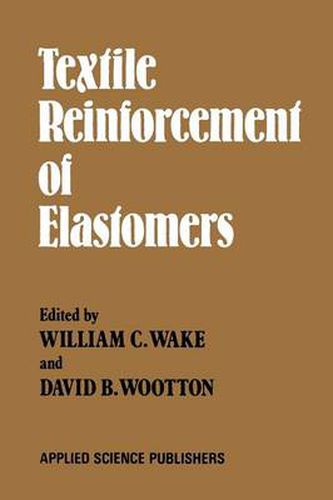Readings Newsletter
Become a Readings Member to make your shopping experience even easier.
Sign in or sign up for free!
You’re not far away from qualifying for FREE standard shipping within Australia
You’ve qualified for FREE standard shipping within Australia
The cart is loading…






This title is printed to order. This book may have been self-published. If so, we cannot guarantee the quality of the content. In the main most books will have gone through the editing process however some may not. We therefore suggest that you be aware of this before ordering this book. If in doubt check either the author or publisher’s details as we are unable to accept any returns unless they are faulty. Please contact us if you have any questions.
The technical importance of flexible composite structures needs no emphasis nor has there been any lack of material descriptive of their manufacture or properties. The starting points of such descriptions have invariably been from the viewpoint of the rubber industry and the presence of a suitable textile has been taken for granted, its strength properties indicated and the technological content confined to the manufacturing process within the rubber industry. An attempt is made here to work from the textile outwards. Industrial fabrics are far heavier than garment textiles, are not produced in the same bulk quantities and need to be specially constructed to provide the balance of properties which will combine with those of the rubber to give the final. product. The most important composite structure formed from textiles and rubber is, of course, the pneumatic tyre. It may therefore seem strange that no chapter deals with this. The reason is quite simple. To deal with the structure and design of the pneumatic tyre in a similar depth of detail as is done here for conveyor or power transmission belting, or hose, would require disproportionate space; in fact, a second volume equal in size to the present one. This book discusses from the textile viewpoint the various reinforced rubber structures used industrially with the exception of the tyre. These other uses of industrial fabrics can be discussed in adequate detail and cover the whole range of the technology involved in the space available in the one volume.
$9.00 standard shipping within Australia
FREE standard shipping within Australia for orders over $100.00
Express & International shipping calculated at checkout
This title is printed to order. This book may have been self-published. If so, we cannot guarantee the quality of the content. In the main most books will have gone through the editing process however some may not. We therefore suggest that you be aware of this before ordering this book. If in doubt check either the author or publisher’s details as we are unable to accept any returns unless they are faulty. Please contact us if you have any questions.
The technical importance of flexible composite structures needs no emphasis nor has there been any lack of material descriptive of their manufacture or properties. The starting points of such descriptions have invariably been from the viewpoint of the rubber industry and the presence of a suitable textile has been taken for granted, its strength properties indicated and the technological content confined to the manufacturing process within the rubber industry. An attempt is made here to work from the textile outwards. Industrial fabrics are far heavier than garment textiles, are not produced in the same bulk quantities and need to be specially constructed to provide the balance of properties which will combine with those of the rubber to give the final. product. The most important composite structure formed from textiles and rubber is, of course, the pneumatic tyre. It may therefore seem strange that no chapter deals with this. The reason is quite simple. To deal with the structure and design of the pneumatic tyre in a similar depth of detail as is done here for conveyor or power transmission belting, or hose, would require disproportionate space; in fact, a second volume equal in size to the present one. This book discusses from the textile viewpoint the various reinforced rubber structures used industrially with the exception of the tyre. These other uses of industrial fabrics can be discussed in adequate detail and cover the whole range of the technology involved in the space available in the one volume.